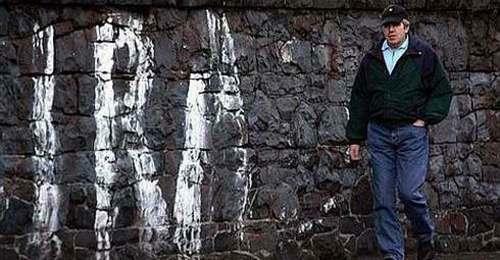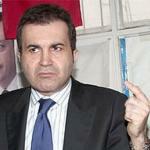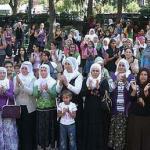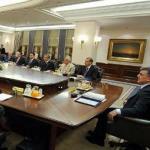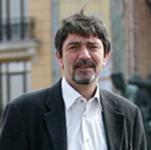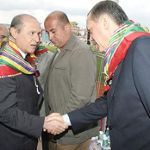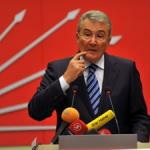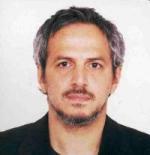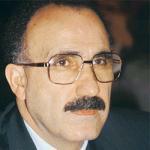There are and were many peace processes going on in the world, from Angola to Cyprus, from South Africa to Palestine. It is difficult to predict which of them may serve as an example for Turkey. However, for two reasons it might be useful to look at the peace process in Northern Ireland as a point of comparison.
The most important reason is that the "Northern Ireland question", like the "Kurdish question", has been continuing for centuries, and that there were twenty-five years of intensive armed conflict between 1969 and 1994. This year, the armed conflict between the Turkish state and the PKK (Kurdistan Workers' Party) is in its 25th year.
Another similarity is that the British government refused direct negotiations with the Irish Republican Army (IRA) and sat down with the Sinn Féin party; this is similar to the PKK-DTP relationship in Turkey.
However, despite these similarities, it must be emphasised that there are also many differences. One is of course geographical: while Britain and Ireland are two islands, the Kurdish presence in Turkey cannot be separated so clearly, either according to region or population.
A second difference is that the "peace process" has not yet become a state policy. Particularly the reactions of the opposition, which speak in an exaggerated manner of "treachery", show that there is still a long way to go before there is a consensus on a peace process.
In Northern Ireland, on the other hand, the peace process was begun as a state policy, agreed on by the bureaucracy, the army and politicians; it was completed due to the efforts of both the Conservative and the Labour party in different governments.
[...]
Below, a short chronology of the Northern Ireland question is followed by a discussion of the peace process which started in 1994.
"Northern Ireland question"
The roots of the conflict in Northern Ireland can be traced back to the beginning of the 17th century, when English and Scottish settlers came to the area and started to rule on the whole of the island. Unlike the Catholic Irish, they were Protestants and called the six counties where they settled in the name of the London-based royal family "Ulster".
In 1922, the Free Irish Republic announced its independence, but the "Ulster" parliament decided tos tay attached to Britain. Since then, the six counties have been called Northern Ireland and have been separate from the rest of the island.
In the 1960s, protests by republican Catholic people who demanded a separation from Britain and a united Ireland quickly turned into the "Northern Ireland question", with certain known actors. First the Protestand paramilitary "Ulster Voluntary Force" emerged and committed acts of violence against the republicans. In 1969, British armed forces entered the area in order to "provide peace". From 1972 onwards, Northern Ireland lost its autonomous status and came under direct rule from London.
The Irish Republican Army (IRA), which had fought for independence of (southern) Ireland and had formed in Dublin in 1916, reeemerged as the "Provisional IRA" in Northern Ireland and announced that it would begin an armed struggle against the regime supported by Britain.
Since then, 3,600 people lost their lives in Northern Ireland, which has a population of 1.5 million, and thousands more were wounded and left disabled. The British press mostly covered the conflict as "IRA terrorism" or "sectarian conflict".
With the death of IRA militant Bobby Sands in prison in 1981, after he had taken part in a hunger strike, there was a change in the nature of the conflict, which had been going in favour of the coalition between Britain and the Protestants. Sands had been elected into British Parliament as an independent MP of Northern Ireland just before his death.
With Sand's death, the republican movement also began to understand the importance of becoming involved in the political process and reviewed its "election boycott". The slogan of Sinn Féin (Gaelic for "we ourselves"), a legal republican party, became "poll cards in one hand, arms in the other". As a result of the change in tactics, Sinn Féin leader Gerry Adams was elected into British Parliament in 1983. The IRA then identified as its next target negotiations between Sinn Féin and the British state. It thus drew the attention of the British public towards the issue with bombing campaigns on the British island. They continued until 1994 and caused the death of 60 people in major British cities.
With the end of the "Iron Lady" Margaret Thatcher's government at the beginning of the 1990, the British state started to look for ways to enter a dialogue with the republican Ireland movement. When John Major, the new Prime Minister, called on the warring sides in Northern Ireland to meet, the IRA announced a ceasefire in 1994. However, when the government announced that it would not meet with Sinn Féin, it withdrew the ceasefire announcement.
At this stage, then US President Bill Clinton intervened, and despite protests by the British government, he invited Gerry Adams to the White House. A similar invitation by the British government only became possible with a change in government. When Tony Blair became PM with the Labour Party in 1997, he met with Gerry Adams in his office; it was announced that Sinn Féin had been officially included in the peace process.
Finally, in April 1998, the "Good Friday Agreement", negotiated by US representative George Mitchell, was signed; it involved the laying down of arms by the IRA, the release of IRA prisoners, the withdrawal of British armed forces, a parliament for Northern Ireland, and a referendum on the union of Ireland.
Since the agreement, an Independent International Commission has monitored the IRA's disarmament. In 2007, the enemies of the past, the Protestant Democratic Unionist Party (DUP) and the Catholic Sinn Féin, formed a coalition government. In the same year, the British state announced that all military operations in Northern Ireland had ceased.
Lessons learnt from the peace process
The Northern Ireland peace process began in 1994, but it took 13 years for complete peace to be achieved in the region. The most strenuous opposition came from the Protestants, many of whom believed that the British government was "selling" them to the IRA terrorists. Ian Paisley, a protestant minister and leader of the DUP, long continued his sermons on the treachery of the British government and also announced his refusal to speak with "terrorists".
In the thirteen years that passed, Paisley realised that he would have to meet with Sinn Féin. The same Paisley was until recently First Minister of the Northern Irish government, together with Martin McGuiness as deputy First Minister. McGuiness is not only a leading Sinn Féin figure, but is known to have been an IRA commander.
The peace process involved obstructions and faults on both sides. The beginning of meetings did not mean that conflict had ended. While conflicts between the IRA and paramilitary Protestant groups continued and still led to loss of life, the "Real IRA" and the "Continuity IRA" split off from the IRA and continued bombings in Britain and attacks on British soldiers in Northern Ireland. In fact, two British soldiers were killed by the Real IRA in March 2009.
However, these problems did not suffice to derail the peace process, due to the determination of the sides involved. The clauses of the Good Friday Agreement were put into effect systematically. As well as the creation of a Northern Irish parliament, the release of political prisoners and the laying down of arms by the IRA, other gestures by the British state also affected the process positively. One of these gestures was an apology for Britain's role in the "Great Famine" of the 19th century in Ireland, and another the changing of "Ulster" to "Northern Ireland" in official texts." (ZY/EÜ)
* Dr. Zafer Yörük, political scientist at Essex and London University. He worked in Arbil, Northern Iraq, in 2007.





